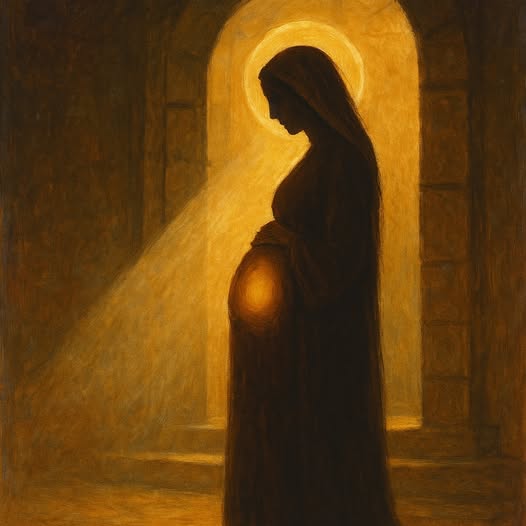
The Pre-Tribulation Rapture doctrine, which teaches that Christians will be removed from the earth before seven years of tribulation, is often justified by proponents on the grounds of keeping “the Bride of Christ” (the Church) pure and undefiled. While this view appeals to the imagery of a spotless bride presented to Christ, a closer examination of history and scripture reveals that this belief is not only historically unfounded but also diminishes the depth and resilience of the Church’s identity as the Bride of Christ.
The Historical Roots of the Pre-Tribulation Rapture Doctrine
The Pre-Tribulation Rapture belief is a relatively recent development in Christian theology, originating in the early 19th century. It was popularized by John Nelson Darby, a leader in the Plymouth Brethren movement, and further spread through the notes in the Scofield Reference Bible. Before this period, the dominant eschatological views within the Church were Amillennialism, Postmillennialism, and Historic Premillennialism, none of which included a Pre-Tribulation Rapture.
Church history shows that Christians for centuries have faced persecution, martyrdom, and trials, yet these experiences were not interpreted as evidence that the Church had somehow failed to remain pure. On the contrary, early Christians understood suffering as a means of sanctification and as a way to share in the sufferings of Christ (Philippians 3:10, 1 Peter 4:13).
The Scriptural Basis for the Church’s Role in Tribulation
- The Bride’s Purification Through Suffering
Ephesians 5:25-27 speaks of Christ cleansing the Church to present her as a spotless bride. However, this purification is described as being accomplished through sanctification by the Word, not by physical removal from the earth. The imagery of purification often includes enduring trials to refine faith (James 1:2-4, 1 Peter 1:6-7). The idea that suffering is antithetical to the Church’s purity is inconsistent with these teachings.
- The Promise of Tribulation
Jesus explicitly stated that His followers would face tribulation:
“In this world, you will have trouble. But take heart! I have overcome the world” (John 16:33).
Paul reinforces this in Acts 14:22, saying, “We must go through many hardships to enter the kingdom of God.” The consistent New Testament theme is that believers are called to endure suffering, not escape it.
- The Church’s Testimony During Tribulation
Revelation 12:11 highlights the role of the faithful during tribulation:
“They triumphed over him by the blood of the Lamb and by the word of their testimony; they did not love their lives so much as to shrink from death.”
This passage portrays the Church as victorious, not because it avoids suffering, but because it remains faithful through trials. The bride’s purity is demonstrated in her steadfast devotion, even in the face of persecution.
Theological and Practical Issues with the Pre-Tribulation View
- A Misrepresentation of the Bride’s Strength
The notion that the Bride of Christ must be “rescued” to remain pure underestimates the transformative power of God’s grace. The Church has withstood centuries of persecution and cultural opposition, emerging stronger and more refined. Suggesting that the Church needs to be removed to avoid defilement diminishes the redemptive work of Christ and the sustaining power of the Holy Spirit.
- A Disrespectful View of Martyrdom
The Church’s history is replete with examples of believers who willingly faced martyrdom for their faith. From the early Christians in Rome to modern-day martyrs, their sacrifice is a testimony to the Church’s purity and commitment to Christ. The Pre-Tribulation Rapture doctrine implicitly undermines this legacy by proposing that future Christians will be spared from trials that their predecessors endured with honor.
- A Misunderstanding of God’s Justice
Pre-Tribulation proponents often argue that the Church’s removal is necessary to avoid God’s wrath. However, scripture consistently distinguishes between God’s wrath against the wicked and His discipline or testing of the righteous. Noah’s family endured the flood safely in the ark, and the Israelites in Egypt were protected during the plagues. These examples demonstrate that God can preserve His people amidst His judgments without removing them from the earth.
Conclusion
The imagery of the Church as the Bride of Christ is a profound picture of love, commitment, and transformation. However, the Pre-Tribulation Rapture doctrine’s use of this metaphor to justify an escape from suffering is inconsistent with both history and scripture. Rather than seeking to avoid tribulation, the Church is called to stand firm, demonstrating her faithfulness and purity through endurance.
The true Bride of Christ is not pristine because she avoids suffering but because she is made holy through her union with Christ, refined in the furnace of trials, and victorious in her testimony. It is through these challenges that the Church reveals her devotion and readiness to meet her Bridegroom. As Paul declared:
“Who shall separate us from the love of Christ? Shall trouble or hardship or persecution or famine or nakedness or danger or sword? No, in all these things we are more than conquerors through Him who loved us” (Romans 8:35, 37).
Let us reject doctrines that diminish the Church’s strength and embrace the high calling to endure as Christ’s faithful bride.
Discussion Questions
- How does the concept of enduring trials contribute to the Church’s role as the Bride of Christ?
- What scriptural evidence supports or refutes the idea that the Bride must be removed from tribulation to remain pure?
- How has the historical experience of Christian martyrdom shaped the understanding of the Church’s sanctification through suffering?







